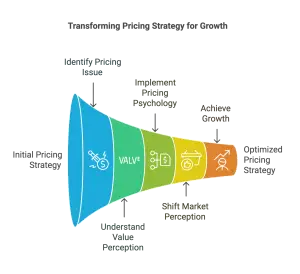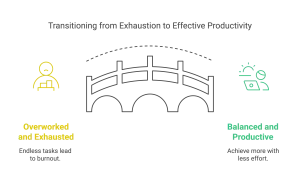Have you ever felt like there’s never enough time in the day? Like you’re constantly busy, but not as productive as you’d like to be? If so, then the 15-Minute Rule might just be the game-changer you need. This time management strategy, popularized in the late 1980s, is all about breaking your tasks down into manageable chunks of time. By dedicating just 15 minutes to a specific task before taking a five-minute break, you can make the most of your valuable time and improve your productivity. In this article, we’ll dive deeper into the 15-Minute Rule and explore how it can revolutionize your approach to time management. Get ready to reclaim your time and supercharge your productivity. Let’s dive in!
Table of contents
Benefits of Time Management
Effective time management is an essential skill that can greatly enhance your productivity and overall work performance. By managing your time efficiently, you can prioritize tasks, meet deadlines, reduce stress, and maintain a better work-life balance.
One of the key benefits of implementing time management strategies is increased efficiency. When you have a clear plan and allocate specific time frames for each task, you eliminate wasted time and streamline your workflow. This allows you to accomplish more in less time, boosting your productivity significantly.
Another advantage of effective time management using the 15-minute rule is better task prioritization. By organizing your to-do list and identifying the most important and urgent tasks, you can focus your energy and attention on the activities that will have the greatest impact. This not only helps you meet deadlines but also ensures that you are working on the tasks that align with your goals and priorities.
Moreover, time management techniques can help improve your focus. By breaking down your work into manageable chunks and allocating specific time blocks for each task, you can eliminate distractions and stay fully engaged in what you are doing. This allows you to work more efficiently and produce higher-quality results.
Lastly, effective time management can help reduce stress and create a better work-life balance. By properly scheduling and allocating time for work, personal responsibilities, and leisure activities, you can avoid overwhelming yourself with excessive workloads. This enables you to enjoy more quality time with loved ones, engage in self-care activities, and maintain a healthier overall well-being.
The 15-Minute Rule: A Closer Look
As a busy professional striving for success, you understand the importance of effective time management. In your pursuit of productivity, you may have come across various strategies and techniques. One such method that has gained popularity is the 15-Minute Rule. Today, we will take a closer look at this powerful approach to managing your time and explore how it can help you maximize your productivity and achieve your goals. By understanding the principles behind this technique and implementing it into your daily routine, you can unlock new levels of efficiency, focus, and success. So, let’s dive in and uncover the secrets of the 15-Minute Rule!
Setting Up a Timer
Setting up a timer for the 15-Minute Rule is essential to maximize your productivity and make the most of your time. With various options to choose from, you can easily find a method that works best for you.
One option is to use a physical timer. You can find small, portable timers that you can keep on your desk or carry with you wherever you go. This ensures that you have a designated visual reminder of the 15-minute time frame, keeping you focused and motivated.
Another option is to use the timer on your phone. Most smartphones have a built-in timer feature that allows you to set a specific duration. Simply open the timer app, set it to 15 minutes, and let it countdown. This way, you can always have your timer easily accessible, even when you’re on the go.
For those who prefer a digital display, using a digital clock is another effective option. Set the clock to display the time in large digits, and position it within your line of sight. This way, you can quickly glance at the clock and keep track of the 15-minute interval.
Setting a timer creates a sense of urgency and ensures that you stick to the 15-Minute Rule. It helps you stay focused and committed to completing tasks within the designated time frame. So, whether you choose a physical timer, phone timer, or a digital clock, setting up a timer is a valuable tool for effective time management. Embrace the power of the 15-Minute Rule and make the most of every minute.
Breaking Tasks into Smaller Chunks: Boosting Productivity and Time Management
1. Identify the main goal: Before diving into a task, clearly define the desired outcome. This gives you a clear target to work towards and helps you stay focused.
2. Divide tasks into subtasks: Break down the main task into smaller, more manageable subtasks. By doing this, you create a clear roadmap of what needs to be accomplished, making the task less intimidating.
3. Prioritize and sequence: Determine the order in which the subtasks need to be completed. Identify any dependencies or sequential steps that need to be followed. This helps you create a logical flow and prevents wasting time on unnecessary backtracking.
4. Focus on one chunk at a time: Instead of overwhelming yourself with the entire task, concentrate on completing one subtask at a time. By focusing on smaller chunks, you can stay present, be more efficient, and maintain a higher level of concentration.
5. Set deadlines for each chunk: Assign a time frame for each subtask to avoid procrastination. This helps you track progress and maintain a sense of urgency, ensuring that you make steady progress towards your ultimate goal.
Breaking tasks into smaller chunks is crucial for improving productivity and time management. It allows you to tackle large tasks more effectively by providing a clear plan of action. By breaking down complex projects into smaller, more manageable pieces, you increase your chances of staying focused, reducing overwhelm, and getting things done efficiently. So, remember to break it down, one chunk at a time, and watch your productivity soar.
Working for 15 Minutes
Are you tired of feeling overwhelmed by your never-ending to-do list? Do you struggle to stay focused and productive throughout the day? It’s time to take control of your time with the 15-Minute Rule.
The 15-Minute Rule is a simple yet effective time management strategy that allows you to work smarter, not harder. Instead of diving headfirst into a task and getting lost in the abyss of time, break it down into smaller, more manageable chunks. By doing so, you create a clear roadmap of what needs to be accomplished, making the task less intimidating.
Once you have your list of smaller tasks, set a timer for 15 minutes and dive in. During this time, you must stay focused and eliminate distractions. Resist the urge to check your phone or browse the internet. Channel all your energy and attention into the task at hand.
The beauty of the 15-Minute Rule lies in its simplicity. It gives you a sense of urgency and helps you maintain a higher level of concentration. And don’t forget the importance of taking short breaks between sessions. These breaks allow your mind to rest and recharge, ensuring that you stay fresh and productive throughout the day.
So, the next time you feel overwhelmed by a daunting task, remember the 15-Minute Rule. Break it down, set a timer, stay focused, and take those short breaks. You’ll be amazed at how much you can accomplish in just 15 minutes. It’s time to take control of your time and conquer your to-do list like a boss.
Taking Short Breaks in Between Sessions
In the high-stakes game of productivity, it’s easy to get lost in the hustle and bustle of work. We dive headfirst into our tasks, our eyes locked on screens, as the minutes melt away. But what if I told you that taking short breaks in between work sessions could actually boost your productivity and well-being?
When we give ourselves a rest from staring at screens, we recharge our minds and bodies, rejuvenating our focus and creativity. It’s like hitting the refresh button on your productivity. So, don’t let the fear of slowing down hold you back. Embrace the power of short breaks and watch your productivity soar.
During these breaks, step away from your desk and stretch your body. Stand up, walk around, and release the tension in your muscles. Not only does stretching improve your physical well-being, but it also increases blood flow to your brain, sharpening your focus for the next session.
If you want to take it a step further, go outside and soak up some sunshine. Nature has a way of rejuvenating our minds and reducing stress. Take a few deep breaths of fresh air and let the natural surroundings remind you of the bigger picture.
And if you’re feeling overwhelmed by the fast-paced world, take a mini meditation break. Close your eyes, focus on your breath, and let the noise and worries of the day melt away. Even just a few minutes of mindfulness can bring a sense of calm and clarity to your day.
Making the Most of Your Time
To truly make the most of your time, you need a practical and strategic approach. Here are some tips and strategies that will help you maximize your productivity and achieve your goals:
1. Eliminate Distractions: Identify the things that distract you the most and find ways to minimize or eliminate them. Whether it’s turning off notifications on your phone, closing unnecessary tabs on your computer, or finding a quiet workspace, creating a distraction-free environment is crucial for focused work.
2. Set Specific Goals: Clearly define what you want to accomplish within a specific period of time. Set specific, measurable, achievable, relevant, and time-bound (SMART) goals that align with your overall objectives. This will help you stay motivated and focused on what truly matters.
3. Utilize Time Management Tools: There are plenty of time management tools available that can help you stay organized and productive. From project management software to task management apps, find the tools that work best for you and integrate them into your routine.
4. Prioritize Tasks: Not all tasks are created equal. Prioritize your tasks based on their importance and urgency. This will help you focus your energy on the most critical tasks and avoid wasting time on less significant ones.
Remember to maintain a positive mindset throughout your time management journey. Celebrate your achievements, learn from your mistakes, and keep pushing forward. With the right strategies and a determined mindset, you can make the most of your time and achieve your desired outcomes. Go out there and seize every moment!
How to use the ’15 Minute Rule’
Are you tired of feeling overwhelmed by your endless to-do list? Do you struggle with managing your time effectively? Then it’s time to harness the power of the “15 Minute Rule” for effective time management.
Here’s how you can use this powerful technique to take control of your day and achieve your goals:
1. Break tasks into 15-minute chunks: Instead of tackling a daunting task all at once, break it down into smaller, more manageable tasks that can be completed in just 15 minutes. This not only makes the task less intimidating, but it also allows you to make progress and build momentum.
2. Take 5-minute breaks: After every 15-minute work block, reward yourself with a 5-minute break. Use this time to recharge, stretch, or even do a quick task that brings you joy. These short breaks help to keep you focused and prevent burnout.
By breaking tasks into smaller chunks and taking regular breaks, you’ll be amazed at how much you can accomplish. This method improves your productivity, keeps you engaged, and prevents procrastination.
But that’s not all—the “15 Minute Rule of Time Management” is not just about managing your time efficiently. It’s also about achieving big goals through a series of small steps. By consistently dedicating blocks of time to specific tasks, you’ll gradually make progress towards your larger objectives.
So, whether you’re tackling a work project, studying for an exam, or tackling household chores, implement the “15 Minute Rule” and start maximizing your time and productivity today. Small steps will lead to big results!
3 Steps To Implement the ‘15-Minute Rule’
Are you tired of feeling overwhelmed by your never-ending to-do list? Do you wish you could find a way to manage your time more effectively and accomplish your goals with ease? Look no further than the powerful “15-Minute Rule.” This simple yet effective time management technique can transform the way you approach your tasks and help you achieve greatness.
Here are three easy steps to implement the ’15-Minute Rule’ for effective time management:
Step 1: Select a task: Start by identifying a task from your to-do list that you want to tackle. It could be a daunting project, a challenging assignment, or even a mundane chore. The key is to choose something that you can break down into smaller chunks and complete in just 15 minutes.
Step 2: Set a timer: Once you’ve selected your task, set a timer for 15 minutes. This will create a sense of urgency and focus, allowing you to make the most of your time. Remember, the goal is not to finish the entire task in one go, but rather to make progress and build momentum.
Step 3: Work on the task: Now it’s time to dive into your chosen task. Give it your undivided attention and work on it with laser-like focus. Stay committed and avoid any distractions that might come your way. Push yourself to accomplish as much as possible within the 15-minute timeframe.
By implementing the ’15-Minute Rule,’ you’ll discover the power of breaking tasks into smaller chunks. This technique not only makes tasks more manageable but also helps you stay engaged and motivated. And the best part? It’s incredibly simple to implement.
Variations: The Pomodoro Technique
The Pomodoro Technique is a slight variation of the 15-minute rule for time management. It is known as an effective time management method, It is widely popular for its 25-minute work intervals with 5-minute breaks. However, this technique is not set in stone and can be customized according to individual preferences and needs.
One variation of the Pomodoro Technique involves shorter work intervals and breaks. Some people find that they work best in shorter bursts of intense focus, opting for 15-minute work intervals with 3-4 minute breaks. This condensed version allows for increased productivity by minimizing distractions and maintaining a high level of concentration.
On the other hand, there are those who prefer longer work intervals and breaks. This variation enables individuals to delve deeper into tasks, as they have more uninterrupted time to work on complex projects. Work intervals of 30 or 40 minutes with 10-minute breaks can promote a flow state and give individuals ample time to recharge before tackling the next task.
Each variation of the Pomodoro Technique offers its own unique benefits. Shorter intervals can provide a sense of urgency and foster a quick pace, ensuring that tasks are completed efficiently. Longer intervals, on the other hand, allow for more sustained focus and can lead to a higher level of productivity by reducing the need for task-switching.
By experimenting with different time intervals and breaks, you can find the variation of the Pomodoro Technique that works best for you. Whether you thrive in shorter bursts of intensity or prefer longer stretches of deep work, the key is to find a rhythm that maximizes your productivity and keeps you motivated and focused.
Variations: The 45/15 Rule
The 45/15 Rule, also known as the 45-minute work and 15-minute break rule, is a popular time management strategy that can be customized to suit individual preferences and needs. This rule involves breaking tasks into manageable chunks of 45 minutes of focused work followed by a 15-minute break.
However, there are variations of the 45/15 Rule that can be implemented to optimize productivity. Some individuals find that they work best in shorter bursts of intense focus, and therefore opt for 30/10 or even 20/5 ratios. This allows for increased productivity by minimizing distractions and maintaining a high level of concentration during the work intervals.
On the other hand, there are those who prefer longer work intervals and breaks. For example, the 60/20 Rule involves working for 60 minutes and taking a 20-minute break. This variation enables individuals to delve deeper into tasks, as they have more uninterrupted time to work on complex projects.
By breaking tasks into smaller chunks and taking short breaks in between, individuals can improve their productivity. This approach prevents burnout and helps to maintain focus and motivation. It also allows for better time management and helps to avoid overwhelm or decision fatigue.
To implement the 45/15 Rule or its variations effectively, it is recommended to use a timer or productivity apps to track time. This helps to stay accountable and ensures that the allocated time is used efficiently.
Overall, incorporating variations of the 45/15 Rule into your time management strategy can lead to increased productivity and improved focus, ultimately helping you achieve your goals more effectively.
Variation: The 90/10 Method
Are you tired of constantly feeling overwhelmed and stressed by the never-ending to-do list? Do you find it challenging to manage your time effectively and prioritize your tasks? Well, I have a time management variation that might just be the solution you’ve been searching for: the 90/10 Method.
The 90/10 Method is a powerful variation of time management that involves spending 10% of your time on planning and organizing tasks, and dedicating the remaining 90% to completing the actual activities. This method is all about working smarter, not harder, by focusing on what truly matters.
One of the key benefits of the 90/10 Method is its effectiveness in planning. By allocating a small percentage of your time to planning and organizing, you are able to create a clear roadmap of your tasks and goals. This empowers you with a sense of direction and purpose, making it easier to stay on track and accomplish what needs to be done.
Another advantage of this method is its ability to alleviate stress. With a well thought out plan in place, you can approach each task with confidence and clarity, knowing that you have prioritized your activities effectively. This helps to reduce overwhelm and provides a sense of control over your time.
The 90/10 Method also promotes single-tasking rather than multitasking. Instead of trying to juggle multiple tasks simultaneously, this method encourages you to focus on one task at a time. By dedicating your full attention and energy to each activity, you can achieve higher quality results and increase your overall productivity.
Tips for Effective Time Management Strategies
In a world that constantly demands our attention and pulls us in a million different directions, effective time management has become an essential skill for success. But how do we ensure that we’re making the most of the 24 hours we’re given each day? In this article, we’ll explore some powerful strategies and practical tips to help you take control of your time, boost your productivity, and achieve your goals. From prioritizing tasks to eliminating distractions, we’ll dive deep into the art of time management and equip you with the tools you need to make every moment count. So, buckle up and get ready to unlock the secrets of mastering your time and unleashing your full potential.
Start with a To-Do List
To make the 15-minute rule for time management really work, you want to make every minute count. You dream of days where you accomplish your most important tasks without feeling rushed. It’s time to take control of your time and set yourself up for success. That’s where a to-do list comes in.
Starting your day with a to-do list is a powerful way to improve your time management skills. It gives you a clear roadmap of what needs to get done and helps you prioritize tasks effectively. By putting pen to paper (or fingers to keyboard), you activate your brain and signal to yourself that it’s time to focus and get things done.
One of the key advantages of using a to-do list is gaining perspective on the work you have completed. As you tick off tasks, you can see your progress in real-time. This not only motivates you to keep going, but it also gives you a sense of accomplishment and satisfaction. It’s a visual reminder of all that you have achieved throughout the day.
Additionally, a to-do list serves as a powerful tool to track your progress. By crossing off completed tasks, you can see how far you’ve come and how much further you have to go. This sense of progression fuels your motivation and keeps you on track.
However, it’s important to acknowledge the disadvantages of relying solely on a to-do list. One potential downside is the lack of specific deadlines and task details. While a to-do list helps prioritize tasks, it doesn’t provide the necessary structure and time estimates for each task. It’s essential to keep this in mind and supplement your to-do list with additional planning or time blocking techniques.
Prioritize Urgent Tasks First
Prioritizing urgent tasks first is a crucial aspect of implementing the 15-Minute Rule for Time Management and optimizing your time management. By tackling urgent tasks head-on, you set yourself up for increased productivity and prevent wasting time on less important tasks.
When you prioritize urgent tasks, you ensure that the most critical and time-sensitive items are addressed first. This allows you to allocate your energy and resources effectively, ensuring that you tackle the most pressing matters before moving on to less urgent ones. By doing so, you reduce the risk of important tasks falling through the cracks or being overlooked.
To determine and prioritize urgent tasks, consider the following strategies:
1. Assess deadlines and time constraints: Identify tasks with specific deadlines or time-sensitive implications and prioritize them accordingly.
2. Consider the impact and consequences: Determine which tasks have the most significant impact on your goals or have potential repercussions if not addressed promptly.
3. Evaluate urgency based on dependencies: If a task is a prerequisite for other important tasks or has dependencies that affect other parts of your workflow, prioritize it accordingly.
4. Seek input from colleagues or stakeholders: Consult with relevant individuals to gain insights into which tasks are considered urgent or have priority from their perspective.
By prioritizing urgent tasks first, you can increase your productivity, prevent wasting time on less important tasks, and ensure that you are allocating your time and energy effectively to achieve your goals. Remember, the key is to identify and address the tasks with the most immediate impact, helping you make the most of your valuable time.
Set Reasonable Time Estimates for Each Task
To effectively manage your time, it is crucial to set reasonable time estimates for each task. This practice allows you to allocate your time accurately, ensuring that you stay on track and accomplish what needs to be done. Here’s why setting reasonable time estimates is so important:
1. Avoid Overcommitment: When you have a clear idea of how long each task will take, you’re less likely to overcommit and overload your schedule. By setting realistic expectations, you prevent the stress and frustration that come from constantly feeling behind and overwhelmed.
2. Prioritize effectively: Accurate time estimates help you prioritize tasks more effectively. You can identify which tasks are urgent and require immediate attention, allowing you to focus on what matters most. This enables you to make informed decisions about where to allocate your time and energy.
3. Plan Buffer Time: By setting reasonable time estimates, you also give yourself some buffer time. This extra time allows for unexpected delays or interruptions that may arise during the completion of a task. Having this buffer time built into your schedule helps you stay on track and minimizes the risk of falling behind.
When setting time estimates for each task, consider factors such as complexity, resources required, potential interruptions, and your own past experience with similar tasks. It’s also helpful to break tasks down into smaller, more manageable chunks and track your time to gain insights into your productivity patterns.
By setting reasonable time estimates, you can effectively manage your time, reduce stress, and increase your productivity. Remember, it’s better to allocate more time for a task and finish early than to underestimate and end up rushing or compromising quality.
Schedule Buffer Time for Unexpected Events
You, my friend, are a go-getter. You’ve got goals, dreams, and a burning desire to make things happen. And I respect that. But let me tell you something: life doesn’t always go according to plan. Things are bound to pop up that you can’t predict or control. And if you don’t have a plan in place to handle these unexpected events, you’re setting yourself up for missed deadlines, ineffective scheduling, and unnecessary stress.
That’s where buffer time comes in. Buffer time in the 15-Minute Rule for Time Management is the secret weapon of productive people who understand that life is unpredictable. It’s a strategic block of time that you intentionally set aside for those unexpected events – the things that inevitably pop up and throw a wrench in your plans.
By scheduling buffer time, you give yourself the flexibility to handle whatever comes your way without throwing your whole schedule off track. It’s like having an insurance policy for your productivity. Instead of scrambling to meet deadlines or trying to squeeze tasks into an already jam-packed schedule, you have that extra cushion of time to handle whatever comes your way.
But buffer time isn’t just about preventing missed deadlines and ineffective scheduling. It’s also about taking care of yourself. When you allocate extra time for unforeseen circumstances, you’re giving yourself the space to breathe, regroup, and recharge. You’re avoiding the trap of multitasking and the temptation to skip breaks – both of which can lead to a decrease in productivity and burnout.
So, my friend, if you want to conquer your goals and dreams, you need to embrace the power of buffer time. Schedule it into your day, protect it fiercely, and watch how it saves you from the chaos of unexpected events. Trust me, it’s the game-changer you’ve been missing.
Track Your Progress and Adjust Accordingly
In the world of effective time management strategies, one crucial aspect often gets overlooked – tracking progress and making adjustments accordingly. You see, managing your time effectively is not a one-time fix; it’s an ongoing process that requires constant evaluation and refinement.
By diligently tracking your progress, you gain valuable insights into your productivity patterns and identify areas of improvement. It’s like having a personal GPS system for your time management journey. When you track your progress, you become aware of time-wasters, distractions, and bottlenecks that hamper your productivity. You can pinpoint the tasks or activities that eat up your valuable time without delivering significant results.
With this newfound awareness, you can then make informed decisions about how to allocate your time more effectively. You can identify time-wasting activities and either eliminate them or find ways to minimize their impact. You can reallocate time from less productive tasks to those that move the needle and bring you closer to your goals. This is obviously a benefit when using the 15-Minute Rule for Time Management.
But tracking progress and adjusting accordingly isn’t just about fixing what’s broken. It’s also about acknowledging what’s working and optimizing it further. When you track your progress, you can identify the tasks or activities that yield the highest return on investment (ROI) and double down on them. You can allocate more time to these high-impact tasks and leverage them to achieve greater results.
Tracking your progress and adjusting accordingly is just one piece of the puzzle. Discover more effective time management strategies and unlock your full potential in my upcoming blog post. Stay tuned!
Use Productivity Techniques to Get More Done in Less Time
Are you tired of constantly feeling like there’s not enough time in the day? Do you find yourself struggling with procrastination and unproductive habits? It’s time to take control of your time and maximize your efficiency with productivity techniques that will help you accomplish more in less time.
By implementing these techniques, you can boost your productivity and overcome the common obstacles that hold you back. Whether it’s the Pomodoro Technique, time blocking, or the 15-minute rule, these methods are designed to help you make the most of your time.
Productivity techniques provide a structured approach to managing your tasks and prioritizing your time. They help you break down larger projects into smaller, manageable tasks, allowing you to tackle them one step at a time. By doing this, you eliminate the overwhelm that often leads to procrastination.
These techniques also encourage focus and concentration by setting specific time limits for each task. Whether it’s working in short bursts of focused effort or dedicating set blocks of time to specific activities, these methods help you avoid distractions and stay on track.
Additionally, productivity techniques allow you to analyze and evaluate your progress. By tracking your time and measuring your results, you can identify areas for improvement and make adjustments accordingly. This continuous cycle of evaluation and refinement allows you to optimize your workflow and accomplish more in less time.
So, why continue to struggle with time management and productivity issues when there are proven techniques that can help you overcome them? Take charge of your time and start implementing these productivity techniques today. Your future self will thank you for it.





